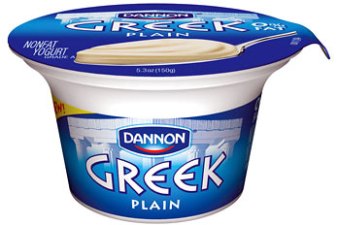Being that it is a requirement of living, it is likely that you have seen a grocery store in your lifetime. (If not, congrats to you for this incredible feat in modern society). Among the common items of bread, eggs, and cheese that you would normally find in the grocery store is the now ubiquitous Greek Yogurt section. Popular for being rich in protein, and its smooth texture, Greek yogurt has taken off as an industry within the past five years. In fact, “…Yogurt production in New York…has tripled between 2007 and 2013.”[1] What yogurt companies and John Stamos have not told you however are the consequences the production of their products have had on the environment.
Unlike traditional yogurt, the Greek variety, “…Yields huge quantities of acid whey, a byproduct that kills aquatic life during decomposition.” In the production cycle, acid whey (which is common component in the making of inexpensive butters and creams) is one of the byproducts that separates from milk after it has been curdled.[2] Yet, because of the aforementioned boom in production, yogurt companies are left with a tremendous amount of waste that cumulatively can greatly impact our oceans, rivers, and streams. Acid whey naturally takes away oxygen from water which has the effect of progressively killing any aquatic life in the area. For example, after an Ohio cheese factory accidentally spilled acid whey into nearby Sandy Creek, close to 5,400 fish were killing along the 1.5 mile river.[3] These figures are pretty extraordinary, but can only provide a glimpse into the potential environmental ramifications if a larger scaled spill were to happen.
Currently, for every three or four ounces of milk, Chobani and other companies can produce only one ounce of creamy Greek yogurt. The rest becomes acid whey.”[4] So what can we do to reverse this trend? According to The Verge and The Modern Farmer several sustainable options are currently being explored. The most promising idea in use is located at a farm in Scipio Center, N.Y where they have successfully turned acid whey into methane, which then is converted into usable electricity. In a simplified and less disgusting version of the process, acid whey and manure are combined in tanks with heat for approximately 20 days. Here the cultures in acid whey break down the contents of the mixture which, in this case, releases methane embedded within the manure where the gas is used as a raw material for electrical generators which power the farm.
Yet, the anaerobic digesters which are required tools for the New York farm require millions in capital investment and are not likely to be available to the local farmer. As a result, we need to cultivate more practical ideas to meet this growing challenge which faces our environment and aquatic life. Here at LGBG we want to empower you with this information to go out and make a difference. Together lets collaborate and inspire to create a solution so that we can all live green, and be green.


